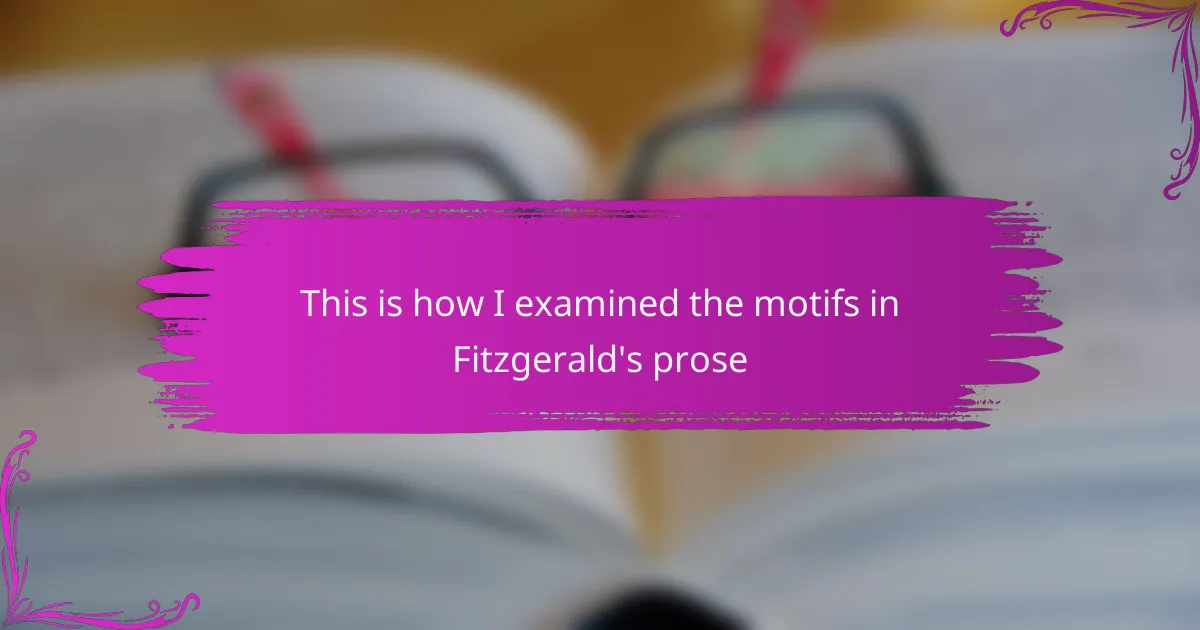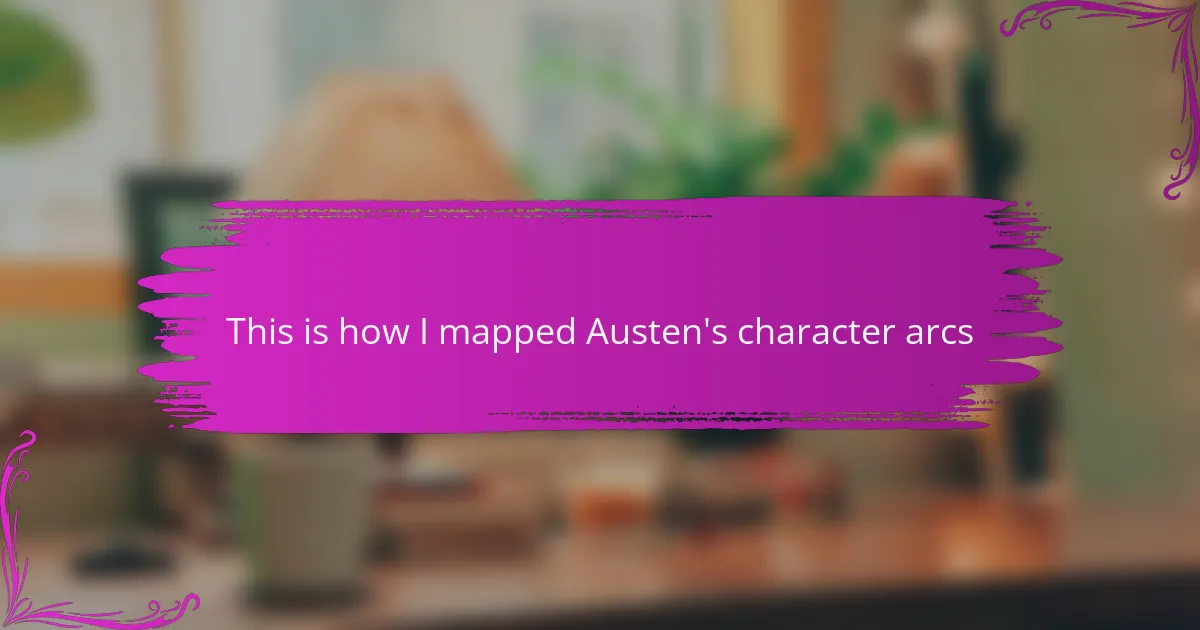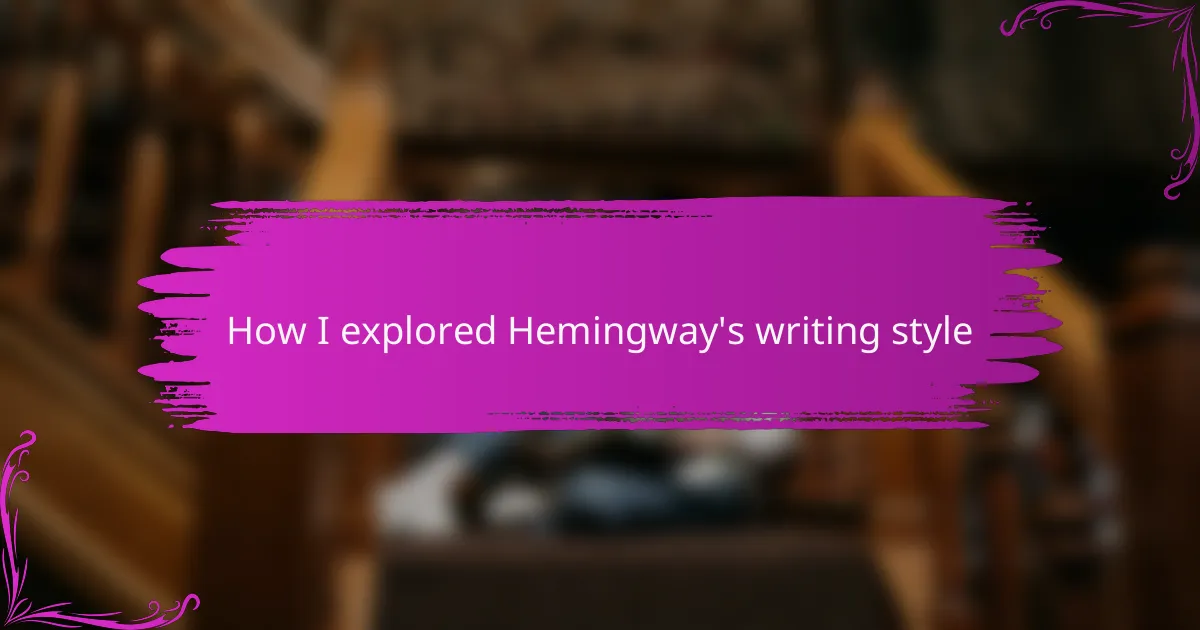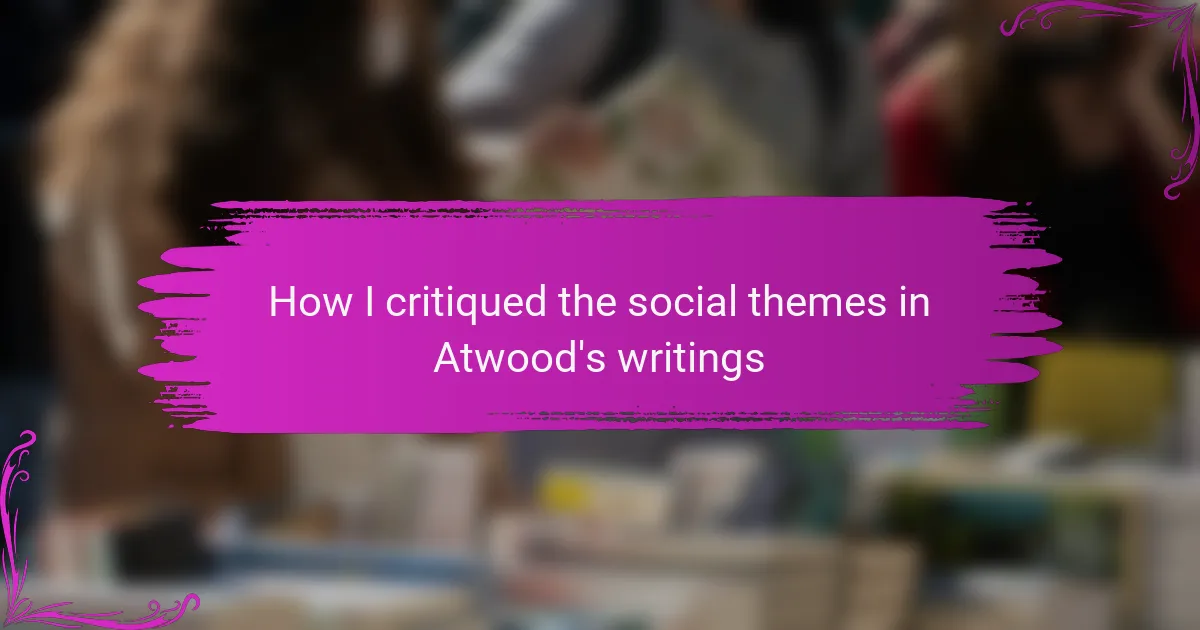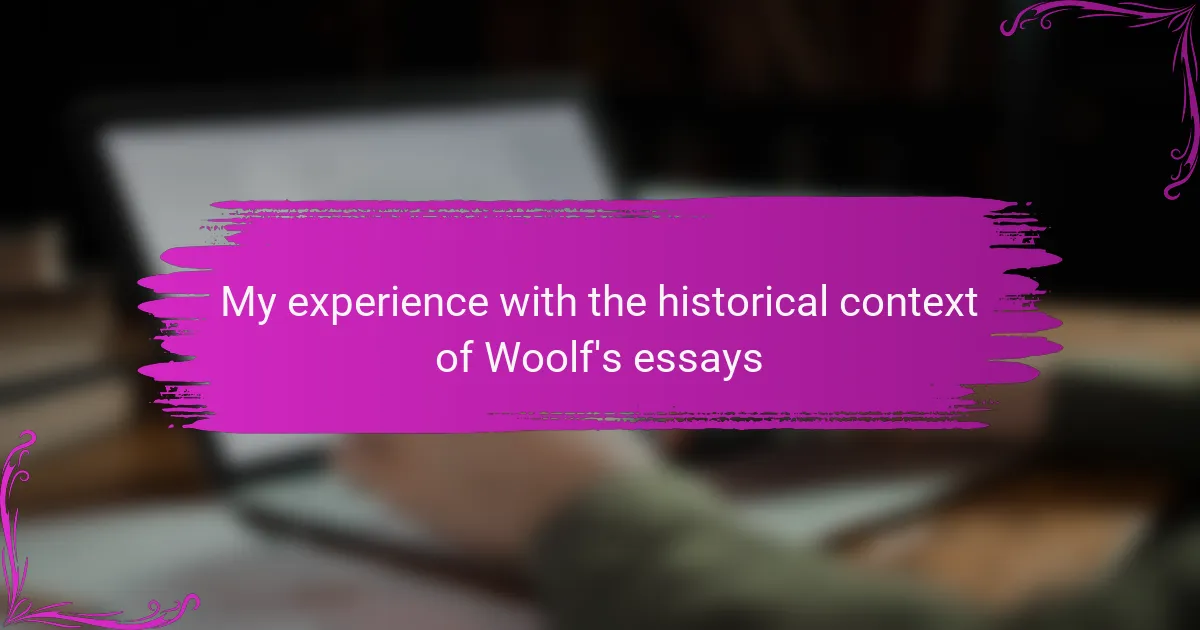Key takeaways Motifs in literature, such as recurring themes and symbols, deepen emotional understanding and enhance connections with characters and narratives. Fitzgerald’s use of motifs like the American Dream and the interplay of light and shadow enriches his prose and prompts reflection on personal experiences. His lyrical style and sharp social commentary invite readers to […]
Key takeaways Character arcs are vital for illustrating personal growth, often shaped by experiences and relationships, as seen in Jane Austen’s characters like Elizabeth Bennet and Mr. Darcy. Mapping character arcs enhances understanding of literature by revealing emotional depth and connections, allowing readers to reflect on their own experiences. Practical techniques such as character journals, […]
Key takeaways Stream of consciousness invites deeper emotional connections and unique perspectives in literature, enhancing reader engagement with characters. Key authors like James Joyce and Virginia Woolf shaped this narrative style, using it to mirror the complexities of human thought and emotion. Analyzing Joyce involves techniques such as close reading, character mapping, and engaging with […]
Key takeaways Maya Angelou’s poetry explores themes of resilience, identity, and empowerment, often drawn from her personal experiences. Her use of vivid imagery and rhythmic language creates powerful emotional connections with readers. Poetry in education fosters emotional expression, critical thinking, and creativity, allowing students to engage deeply with social issues. Recommended resources include her autobiography […]
Key takeaways Hemingway’s writing is characterized by simple, concise sentences that reveal complex emotions, employing the “Iceberg Theory” to suggest deeper meanings beneath the surface. Dialogue in Hemingway’s works serves to develop characters and enhance tension, creating an authentic feel in his storytelling. Literary analysis enriches understanding of themes, fosters emotional connections to texts, and […]
Key takeaways Steinbeck’s landscapes serve as vital characters, reflecting the emotional states and struggles of his characters. Nature’s beauty and brutality amplify the narrative’s thematic depth, evoking strong sensory experiences for readers. Personal connections to the landscapes enhance reader engagement and prompt reflections on one’s own environment. Creative activities, such as visual collages and poetry, […]
Key takeaways Toni Morrison’s novels intricately weave personal and collective histories, inviting readers to reflect on identity, memory, and community. The non-linear narrative structure in Morrison’s works enhances emotional engagement and mirrors the fragmented experiences of her characters. Morrison’s use of rich, lyrical language and symbolism creates a profound emotional resonance, prompting readers to introspect […]
Key takeaways Margaret Atwood’s writings tackle significant social themes such as gender inequality, environmental concerns, and power dynamics, prompting readers to reflect on societal norms. Her use of complex characters and dystopian settings enhances the emotional impact of her narratives, making them relevant and thought-provoking. Critiquing literature fosters critical thinking, empathy, and societal awareness, allowing […]
Key takeaways Virginia Woolf’s essays intertwine personal insights with social commentary, particularly on gender and identity, making her work relevant today. Her innovative stream-of-consciousness style reflects the complexity of human thought and has influenced modern storytelling. Woolf’s exploration of themes like individual freedom and the significance of memory encourages ongoing dialogue about personal and societal […]
Key takeaways Faulkner’s narratives utilize non-linear time and stream-of-consciousness techniques, allowing readers to deeply engage with characters’ inner struggles and perceptions. The themes of memory, identity, and the tension between tradition and change are central to Faulkner’s works, resonating with readers on a personal level. Literature analysis enhances comprehension and critical thinking, encouraging readers to […]
